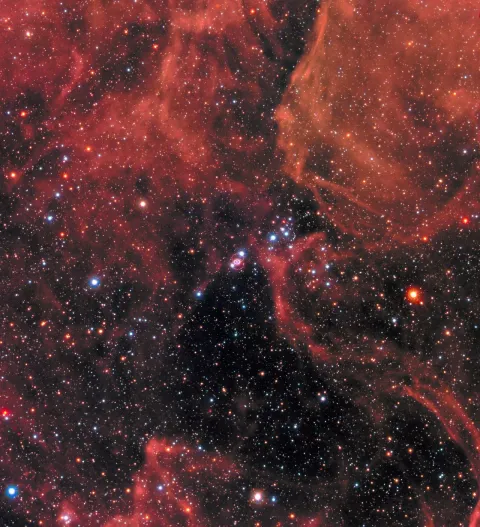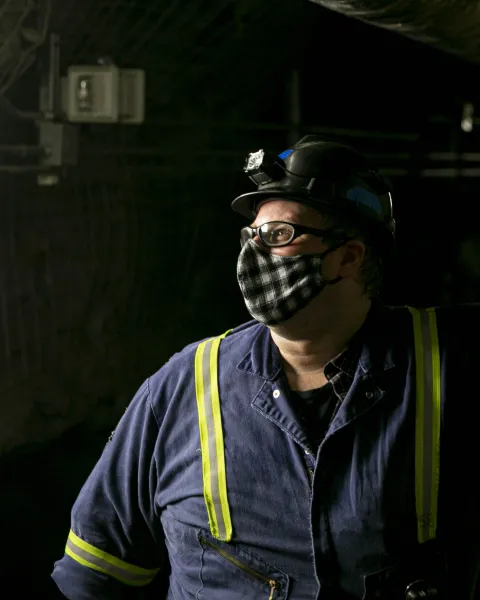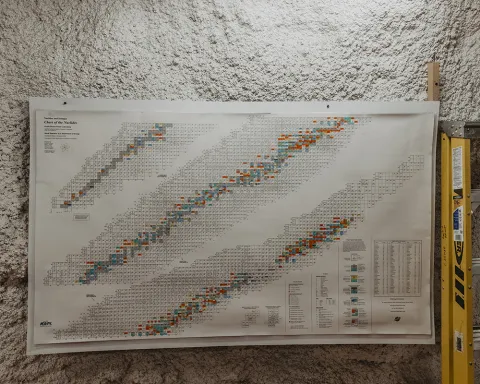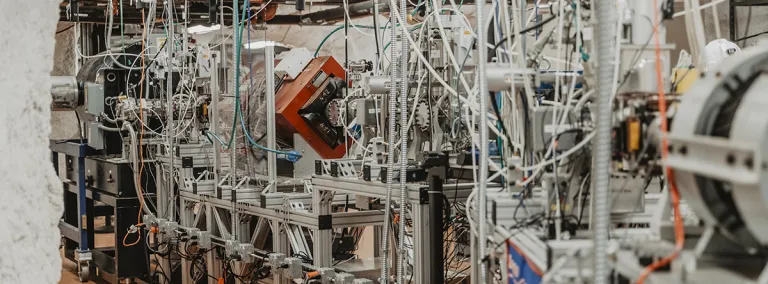Researchers taking inventory of the Universe have found too much and too little
After an unexpected tally of lithium in space, researchers try to pinpoint where cosmological estimates may have gone awry.
Have you ever tried counting the stars? If so, you probably gave up long before sunrise. It may surprise you, then, to know that astrophysicists are still tirelessly taking inventory of space.
Astrophysicists use spectra of starlight to determine how much of each element exists throughout the Universe. And their measurements largely confirm what leading theories predict: vast quantities of lightweight hydrogen and helium outweigh smaller sums of hefty elements like iron and uranium. One element, however, has proven stubbornly inconsistent.
In a head-scratching account, researchers have counted both too much and too little lithium in the Universe.
“Lithium is a problem,” said Frank Strieder, principal investigator of the Compact Accelerator System for Performing Astrophysical Research (CASPAR). “In the Universe today, we see an overabundance of the isotope Lithium-6 and an under-abundance of the isotope Lithium-7.”

This unexpected tally points to a possible hidden flaw in cosmological theory. At Sanford Underground Research Facility (Sanford Lab), CASPAR researchers are helping pinpoint exactly where estimates may have gone awry.
Where do elements come from?
The creation of elements, dubbed “nucleosynthesis” by astrophysicists, occurs in two main phases: Big Bang nucleosynthesis and stellar nucleosynthesis.
The first phase lasted only minutes. In the wake of the Big Bang, hydrogen and helium were created en masse, along with trace amounts of lithium and beryllium. After the Big Bang, these lightweight elements were adrift in space, floating in a sea of energy. Gravity gradually drew dense clouds of elements together, ultimately collapsing them into stars.
The second phase, stellar nucleosynthesis, has been churning out elements for eons. Stars are the element factories of the Universe. Young stars fuse hydrogen together to produce helium. As stars get older and hotter, they begin to fashion heavier elements like carbon, oxygen and neon. In the last throes of life, some stars will create hefty elements from iron to uranium before dying a brilliant death, blasting these elements into space where they will eventually coalesce into planets or reignite into a new generation of stars.

Together, the theories of Big Bang and stellar nucleosynthesis accurately predict the abundance of most elements in the Universe.
“Now comes the caveat,” said Strieder. The inconsistency between predicted abundance of lithium and what is observed in the present Universe cannot be explained away by an inventory miscount. “This discrepancy is significant,” said Strieder. “It’s off by several factors, enough that it cannot be explained by uncertainties in the measurements.”
Theories under scrutiny
Is there a flaw in the otherwise elegant and pragmatic theory of Big Bang nucleosynthesis? Or does the misunderstanding lie in their understanding of stellar nucleosynthesis? Since both processes produce lithium, both are under scrutiny.
Many researchers think the solution lies in incomplete computer models of stellar reactions. To flesh out these models, researchers need more data. How often is lithium created in stellar processes? How quickly is it destroyed? And how are different isotopes of lithium treated differently by the same stellar processes?
Enter CASPAR.
CASPAR is a low-energy particle accelerator that allows researchers to send specific particles toward a target, forcing them to interact as they would inside a star. Housed on the 4850 Level of Sanford Lab, nearly a mile of rock shields the experiment from backgrounds created by our own star, the Sun. Using CASPAR, researchers can gain insight into what actually occurs inside the heart of distant stars.
The CASPAR collaboration recently ran an experiment to better understand how lithium is destroyed in stars—as well as what is produced during that reaction.
The experiment was a vital step toward understanding how stars evolve and what role lithium plays in that process, said Mark Hanhardt, a South Dakota School of Mines and Technology (SD Mines) doctoral candidate whose thesis will analyze and contextualize data from the experiment.
Building toward discovery
“What does this data mean? How will these measurements change the models that we use to understand, not only individual stars, but the evolution of all the stars in the Universe? My job is to put our data in context of the current field of research,” Hanhardt said. “Still, when I finally type in the parameters of this reaction, it won’t drastically change the way we look at the Universe.”

This is because models of stellar nucleosynthesis are intricately complex; they hinge on thousands of similar parameters.
This measurement by CASPAR will provide a few data points for computer models, which could solve a single incongruity in a measurement of one element in the universe. Does this seem like a slow, incremental step toward discovery? It is. But it’s also exactly what CASPAR was designed to do.
“From all the reactions that happen in the stars, we take a number of important reactions and study them case-by-case,” explained Strieder.

Since the CASPAR collaboration achieved first beam in 2017, the accelerator has tested multiple reactions with a similar goal. Data from these experiments bolster computer models, which indicate to theorists where new solutions might be hidden. Theorists then outline new ideas, telling researchers where to look next. On and on the circle goes, spiraling the field toward new discoveries.
